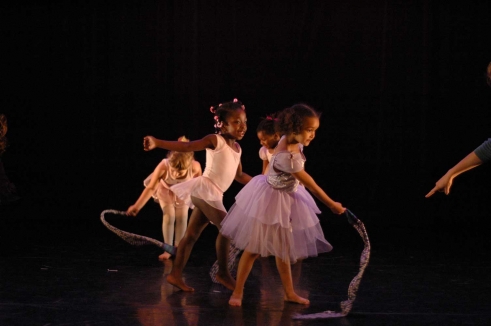Investing in Creativity: A Study of the Support Structure for U.S. Artists
Urban Institute: Maria-Rosario Jackson, Ph.D., Flroence Kabwasa-Green, Daniel Swenson, Joaquin Herranz, Jr., Kadija Ferryman, Caron Atlas, Eric Wallner, Carole Rosenstein, Ph.D.
Supported by a consortium of 38 funders, the seminal Investing in Creativity report created the groundwork for LINC’s ten-year program of research, grantmaking, convening, and other activity and inspired the work of numerous other organizations. Conducted by the Urban Institute under the direction of principal investigator Maria-Rosario Jackson, who continued to collaborate with LINC for its duration, the report sought to develop “a new understanding and appreciation for who artists are and what they do.”
Extracts
This project was undertaken to expand our thinking about who artists are, what they do, and what mechanisms interact to create a hospitable—or inhospitable—environment of support for their work. It is useful to begin this overall report on our findings with the reasons society should be concerned with artists, the focus of previous research focusing on the cultural sector, and the contributions this project makes to the knowledge base.
[. . . ]
Although they are often stereotyped as removed from everyday life and societal processes, artists are fundamental to our cultural heritage and their work is often a crucial part of community life. Artists work in diverse settings ranging from studios and cultural institutions to schools, parks, and various kinds of community centers and social change organizations. They work in all sectors–nonprofit, commercial, public, and informal ones. Artists create paintings, films, music, plays, poems, and other works that reflect the diversity, aspirations, hopes, fears, and contradictions of our society. The work of artists inspires, celebrates, mourns, commemorates, and causes us to question aspects of contemporary life and the human condition.
[. . . ]
In these and other roles, artists are a growing part of the U.S. workforce. But they are typically underpaid in relation to their education, skills, and societal contributions. Moreover, given the multiple roles they play in society, they are often under-recognized and under-valued by funders and policymakers inside and outside of the cultural sector, as well as by the media and the public at large.
[. . .]
This study takes a comprehensive approach to understanding support for artists. Our approach explicitly recognizes that the cultural sector operates not in a vacuum, but in specific communities whose economic and social characteristics, processes, and policies are integral to how each artist lives and works. This environmental approach is different from, but inclusive of, the conventional focus on grants, awards, and similar direct financial support. It also requires a different analytical and measurement framework from the more common one that draws distinctions between artists only by discipline.
In this study, our environmental approach leads us to use place as the organizing principle for our research and findings. Thus, we have developed an analytical framework along the six major dimensions of a place that make it hospitable or inhospitable to artists: validation, demand/markets, material supports, training and professional development, community and networks, and information. In other words, we assert that to understand the health and vitality of the artists’ support structure in any given place, one must understand the status of validating mechanisms, the strength or weakness of the demand and market for artists’ work, the kinds and scope of material supports, the condition of training and professional development opportunities, artists' access to communities of support and professional networks, and the availability of information for and about artists. While our focus in this project has been on the environment of support for artists in all disciplines (in particular cities and rural places), the framework can also be applied in other ways. One can apply the six dimensions of the framework to understand support for any subset of artists. For example, by utilizing the framework, one can ask the status of validation, demand/markets, material supports, training and other elements of the framework for choreographers, or for Asian-American artists, or for emerging artists in all disciplines—in places ranging from neighborhoods to nations and beyond.
[. . . ]
Conclusions and recommendations
Our study presents a comprehensive framework for analyzing, monitoring, and improving the support structure for artists in the United States. Our concept includes the conventional grants and awards typically associated with support, but it encompasses much more because it recognizes the importance of the wider environment in which an artist works.
[. . . ]
To be effective in improving conditions for artists, the framework as a whole and its individual dimensions need stewards at all policy and action levels—local, state, regional, and national. These stewards can be artist-focused organizations, funders, training institutions, public policy officials, and other players. Even if their primary work focuses on only one dimension of artists' support, the stewards need to keep their eye on the whole framework, and work together to address its weaknesses. This requires better coordination among key players in the various dimensions of the support system, as well as new alliances with groups outside the arts whose interests are aligned, such as advocates for affordable housing, community development, and better health coverage.
[. . . ]
Priorities for action
Encourage better public understanding of who artists are, what they do, and how they contribute to society. A large part of this involves addressing the artistic and demographic diversity of artists. We list this priority first because many of the other priorities hinge on it. Arriving at a better public understanding of artists requires gathering better information about the broad array of artists working in the U.S. today, the diverse career paths they take in pursuing their artistic goals, and the multiple ways in which they contribute to society. It involves creating language to better convey artists' diversity and contributions.
But it also requires people inside and outside of the cultural sector—educators, the media, art critics, public policymakers, funders, community leaders, cultural brokers, and artists themselves—to move beyond only an “art for art’s sake” concept and support a more expansive interpretation of artmaking that is consistent with artists' realities. For many players, this will require a significant change in how they think about and relate to artists; for others, it will require thinking about artists as potential partners in a wide range of societal issues for the first time.

